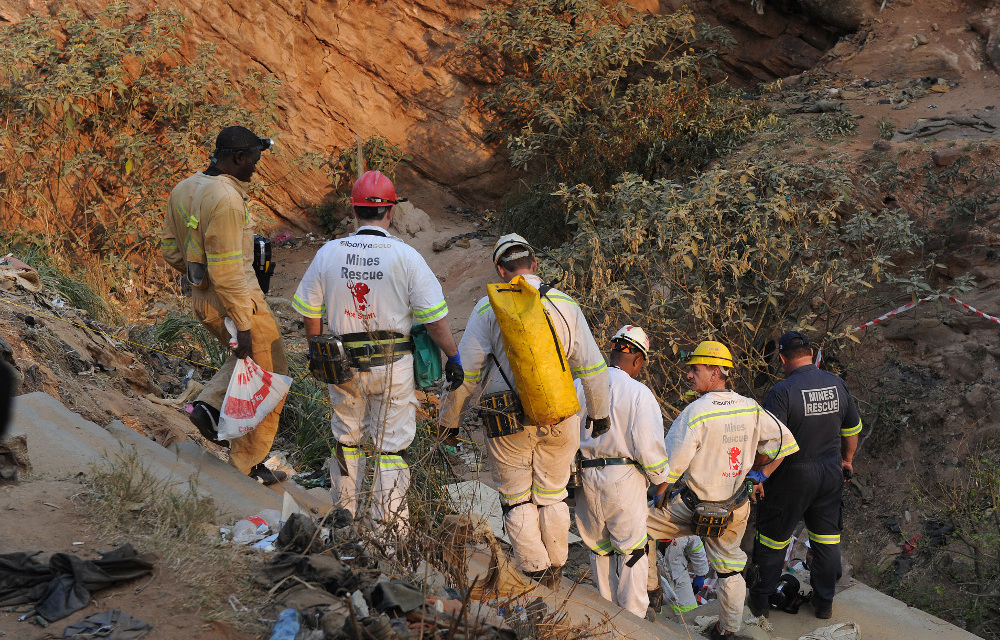Staff Reporters
Over 5 00 Basotho ex-mine workers from South African gold mines have received a combined M443, 759, 209 (about M443 million) in compensation for developing tuberculosis (TB) and silicosis in the workplace.
Tshiamiso Trust, an entity established to effect the payments, has to date paid a total of M1 billion in compensation to over to 11,316 eligible silicosis and TB victims from South Africa, Lesotho, Botswana, Eswatini, and Mozambique.
About M4 billion is still yet to be claimed and paid to more victims, according to a recent statement from Tshiamiso.
The compensation is a result of a settlement agreement reached between six mining companies and claimant attorneys in the historic silicosis and TB class action in 2018.
Six mining companies namely African Rainbow Minerals, Anglo American South Africa, AngloGold Ashanti, Harmony Gold, Sibanye Stillwater, and Gold Fields are involved in the settlement, and about 35 000 former mine workers from the five southern African countries are expected to receive a share of the M5 billion settlement.
“Two years after The Tshiamiso Trust started processing claims for the historic R5 billion settlement agreement, the Trust has announced that the first billion rands has been paid over to 11,316 eligible silicosis and TB claimants,†Tshiamiso said in a statement to Newsday.
“Of the R1.015 billion in claims paid to date, R443, 759, 209 in compensation has been paid to beneficiaries in Lesotho. A total of 5,163 of the 11,445 successful claimants to date have been from Lesotho. This translates to 45 percent of all claims being paid to Basotho beneficiaries.â€
Potential claimants, including mineworkers or their families if they are deceased, can contact Tshiamiso Trust within nine TEBA offices in Lesotho namely in Berea, Butha-Buthe, Leribe/Hlotse, Mafeteng, Maseru, Mohale’s Hoek, Mokhotlong, Qacha’s Nek and Quthing.
“The Trust is aware of the underserviced areas and plans are in progress to address the issue.â€
The criteria for ex-mine workers to be eligible for the compensation is that they must have carried out risk work at one of the qualifying GOLD mines during the qualifying period between March 12, 1965, and December 10, 2019, (bearing in mind that some mines changed ownership during that time and are only considered during the periods that they were owned by the participating mining companies).
The living mineworkers must have permanent lung damage from silicosis or TB that they contracted from doing risky work at these mines.
For deceased mineworkers, there must either be evidence that they died FROM TB within a year of leaving the mine (if it’s a TB claim and the mineworker died before December 10, 2019), or evidence that they had silicosis or died from silicosis if it’s a silicosis claim.
Lusanda Jiya, Tshiamiso Trust’s acting chief executive officer, told Newsday that there were a number of factors that influence the speed at which claims are processed.
“Insufficient documentation is the primary reason for certification delays. Claims related to deceased mineworkers are especially difficult to process with limited documented information on the cause of death.
“To aid in substantiating these claims, the Trust has partnered with the Medical Bureau for Occupational Diseases (MBOD) and TEBA to access documentation such as employment records, historical health data, personal identification, post-mortem reports, and medical records from clinics and hospitals.
This is a mammoth task, as most archives dating back to 1965 have not been digitised. In many cases, claimants need to apply for additional documents related to the cause of death and proof of relationship, such as marriage certificates or letters from the court appointing them as an executor of the deceased’s estate. This all takes timeâ€
She said, the Trust relies on medical professionals and benefit medical examinations (“BMEsâ€) to confirm the presence of compensable diseases for living mineworkers.
“These are time-consuming processes and the scarcity of- and demands on- occupational and pulmonary health specialists within the health sector in general, are compounding factors.
“Sometimes when the mineworkers go for the BMEs, active TB is suspected. In these cases, the claimants need to be referred to go onto treatment for their TB, provide proof of completion of TB treatment, and do a Lung Function Test between 12 and 18 months from when their treatment was completed.
“We also need to be mindful of the time periods that are built into the Trust Deed. This includes a 90-day period for beneficiaries to be added to claims and a 90-day allowance for certification by the Agent that represents the mining companies.
“The reality is that there are many dependencies that are beyond our control. However, in the absence of these challenges, the Trust aims to take nine months to process a claimâ€.
She also warned of claimants to be aware of potential scammers.
“The issue of touters is a big area of concern for the Trust because we do not want our claimants to be taken advantage of. Payments are made by the Tshiamiso Trust ONLY, and claims can only be lodged by the claimant themselves at the lodgment offices or with the officials at outreach initiatives.
“Claimants should never give their documents to, or pay, anybody who says that they will help them to lodge or process their claim. The only third parties involved in the process are TEBA, select medical service providers for Benefit Medical Examinations (BMEs), and ICAS who provides basic financial literacy education before payments are made. If at any time a claimant is feeling unsure or want to check if something is legitimate, they are encouraged to phone our call-back number – 00 27 10 500 6186.â€




